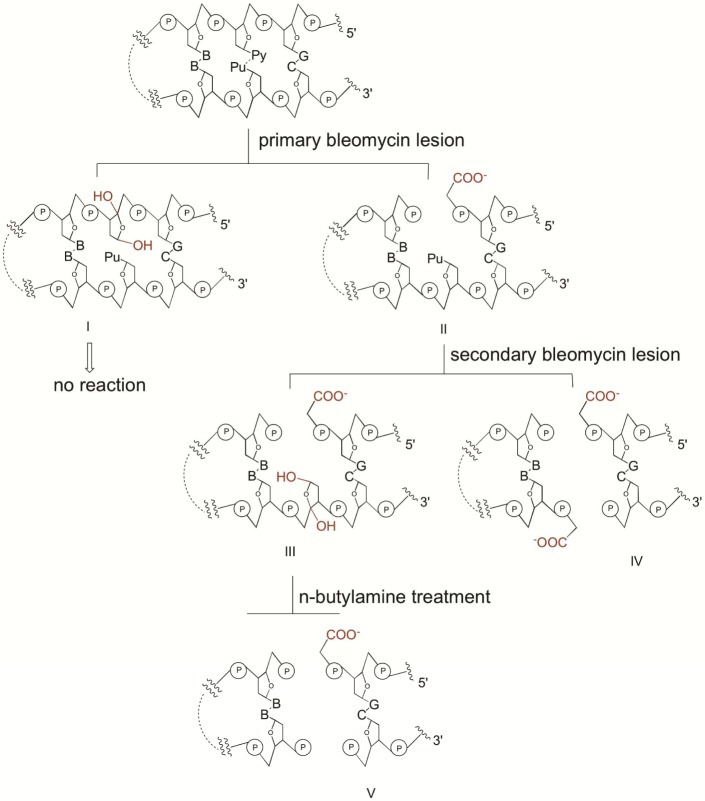Figure 7.
Mechanisms of double-strand DNA cleavage induced by bleomycin.9 Activated Fe·BLM abtracts H• from C-4′ of deoxyribose at a primary cleavage site, producing either an apyrimidinic/apurinic site (I) or a single-strand break having a 3′-phosphoroglycolate terminus (II). Although the apurinic site (I) does not undergo further reaction, strand break II is a potential target for a secondary BLM cleavage reaction on the opposing DNA strand. The secondary attack of (re)activated bleomycin by abstracting the C-4′ H atom from the secondary site sugar affords either a double-strand break with 5′-phosphate and 3′-phosphoroglycolate termini (IV) or a strand break at the primary site accompanied by an AP lesion at the secondary site (III). The latter upon treatment with mild base can produce a double-strand cleavage product (V).

